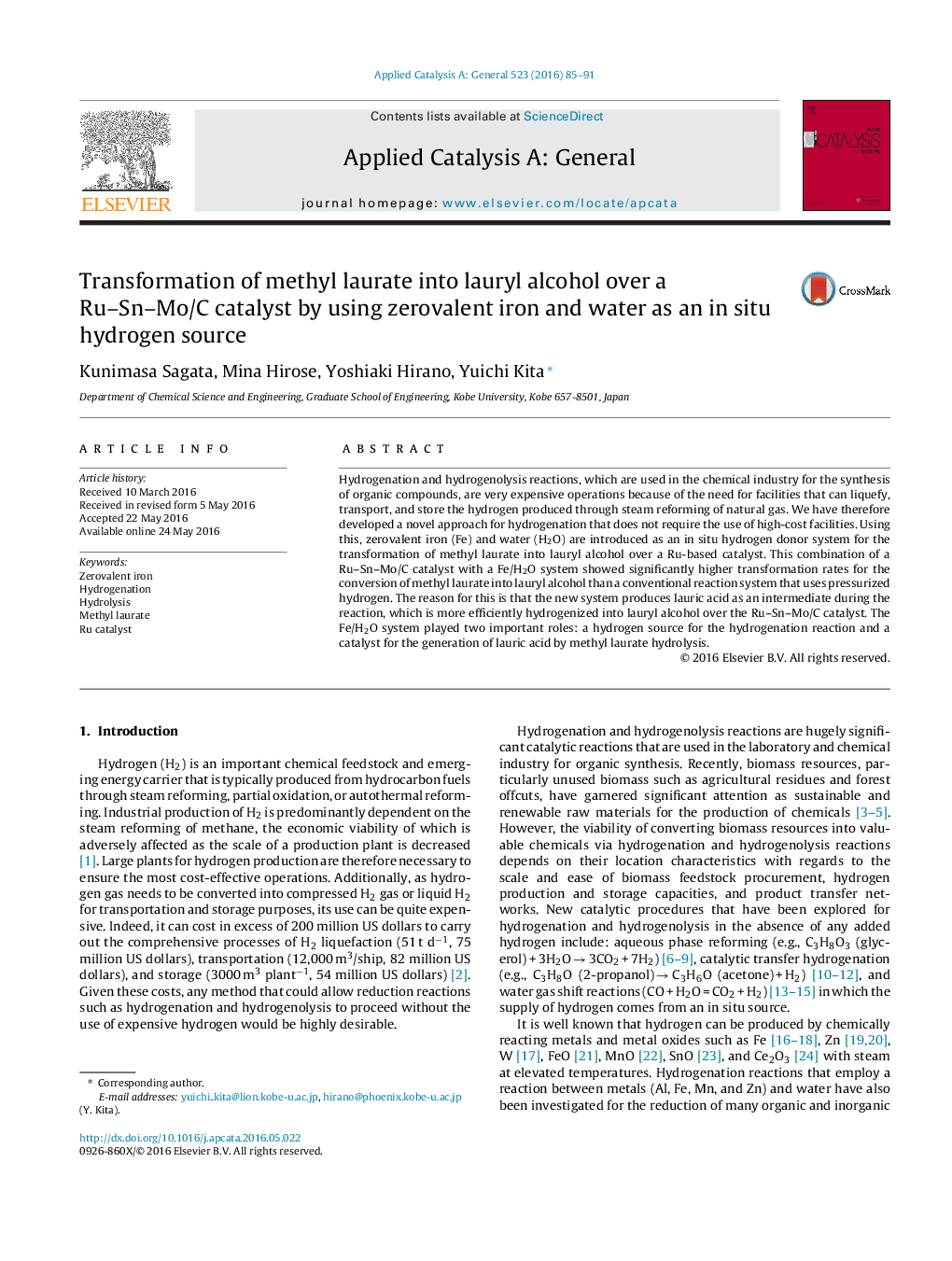| کد مقاله | کد نشریه | سال انتشار | مقاله انگلیسی | نسخه تمام متن |
|---|---|---|---|---|
| 38754 | 45790 | 2016 | 7 صفحه PDF | دانلود رایگان |

• We used hydrogen derived from a reaction of zerovalent iron and water as a novel in-situ hydrogen donor system.
• The Ru-based catalyst with the Fe/H2O system efficiently produced lauryl alcohol via lauric acid as an intermediate.
• We hope that this Fe/H2O reaction system will encourage the use of more eco-friendly hydrogenation reaction systems.
Hydrogenation and hydrogenolysis reactions, which are used in the chemical industry for the synthesis of organic compounds, are very expensive operations because of the need for facilities that can liquefy, transport, and store the hydrogen produced through steam reforming of natural gas. We have therefore developed a novel approach for hydrogenation that does not require the use of high-cost facilities. Using this, zerovalent iron (Fe) and water (H2O) are introduced as an in situ hydrogen donor system for the transformation of methyl laurate into lauryl alcohol over a Ru-based catalyst. This combination of a Ru–Sn–Mo/C catalyst with a Fe/H2O system showed significantly higher transformation rates for the conversion of methyl laurate into lauryl alcohol than a conventional reaction system that uses pressurized hydrogen. The reason for this is that the new system produces lauric acid as an intermediate during the reaction, which is more efficiently hydrogenized into lauryl alcohol over the Ru–Sn–Mo/C catalyst. The Fe/H2O system played two important roles: a hydrogen source for the hydrogenation reaction and a catalyst for the generation of lauric acid by methyl laurate hydrolysis.
Figure optionsDownload high-quality image (133 K)Download as PowerPoint slide
Journal: Applied Catalysis A: General - Volume 523, 5 August 2016, Pages 85–91